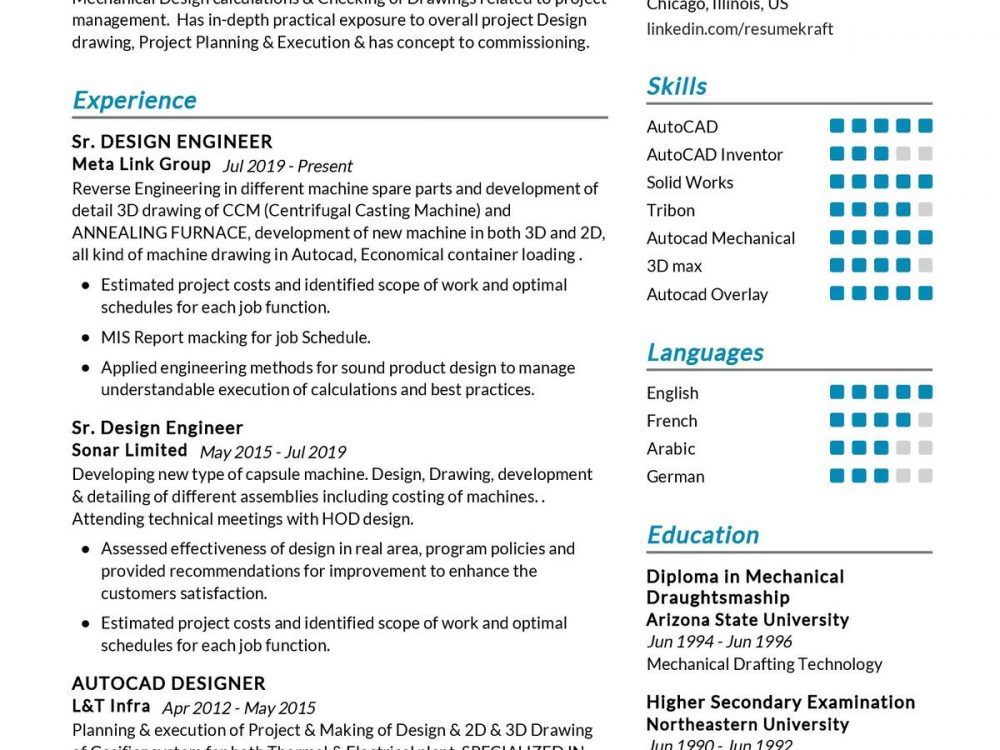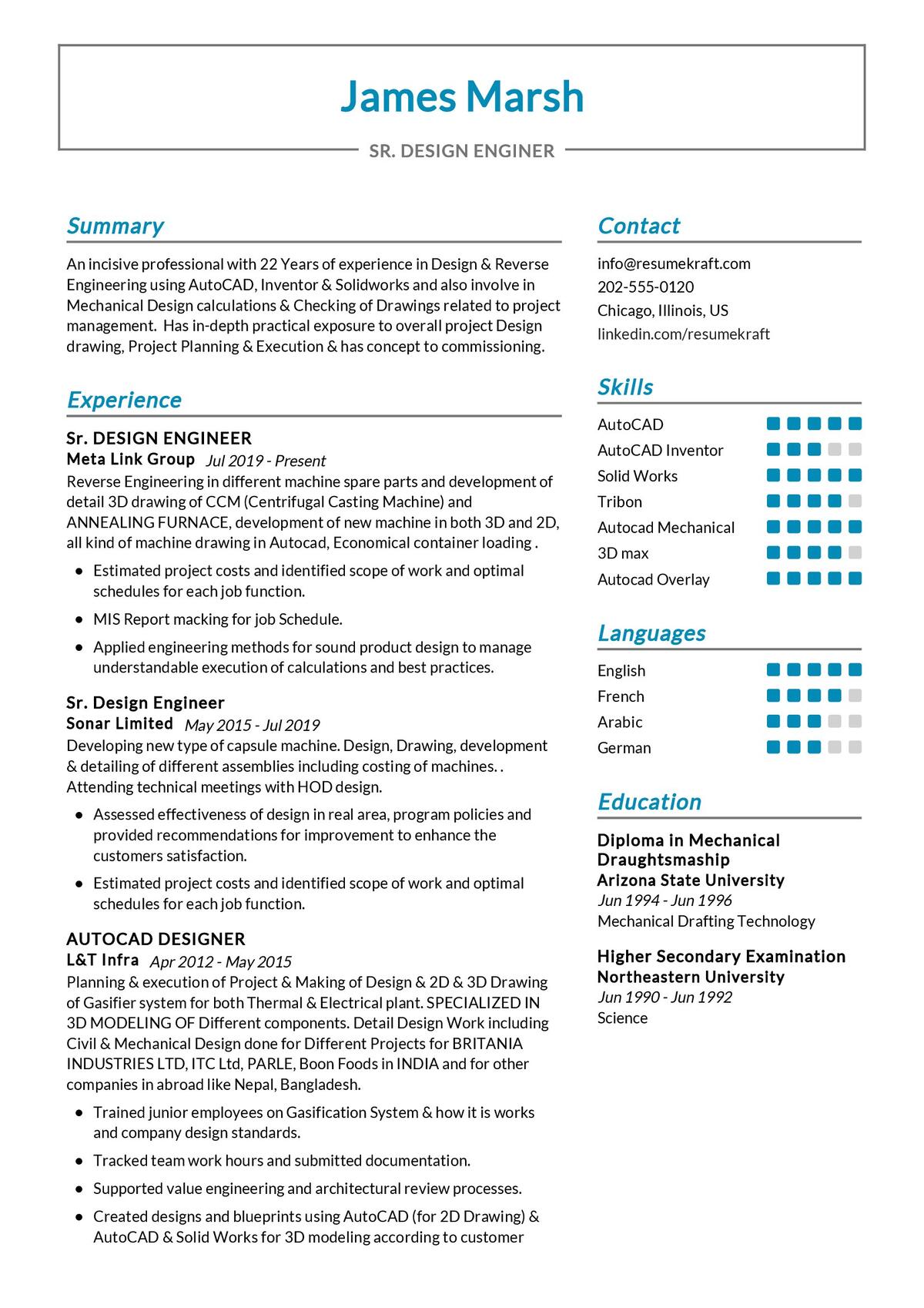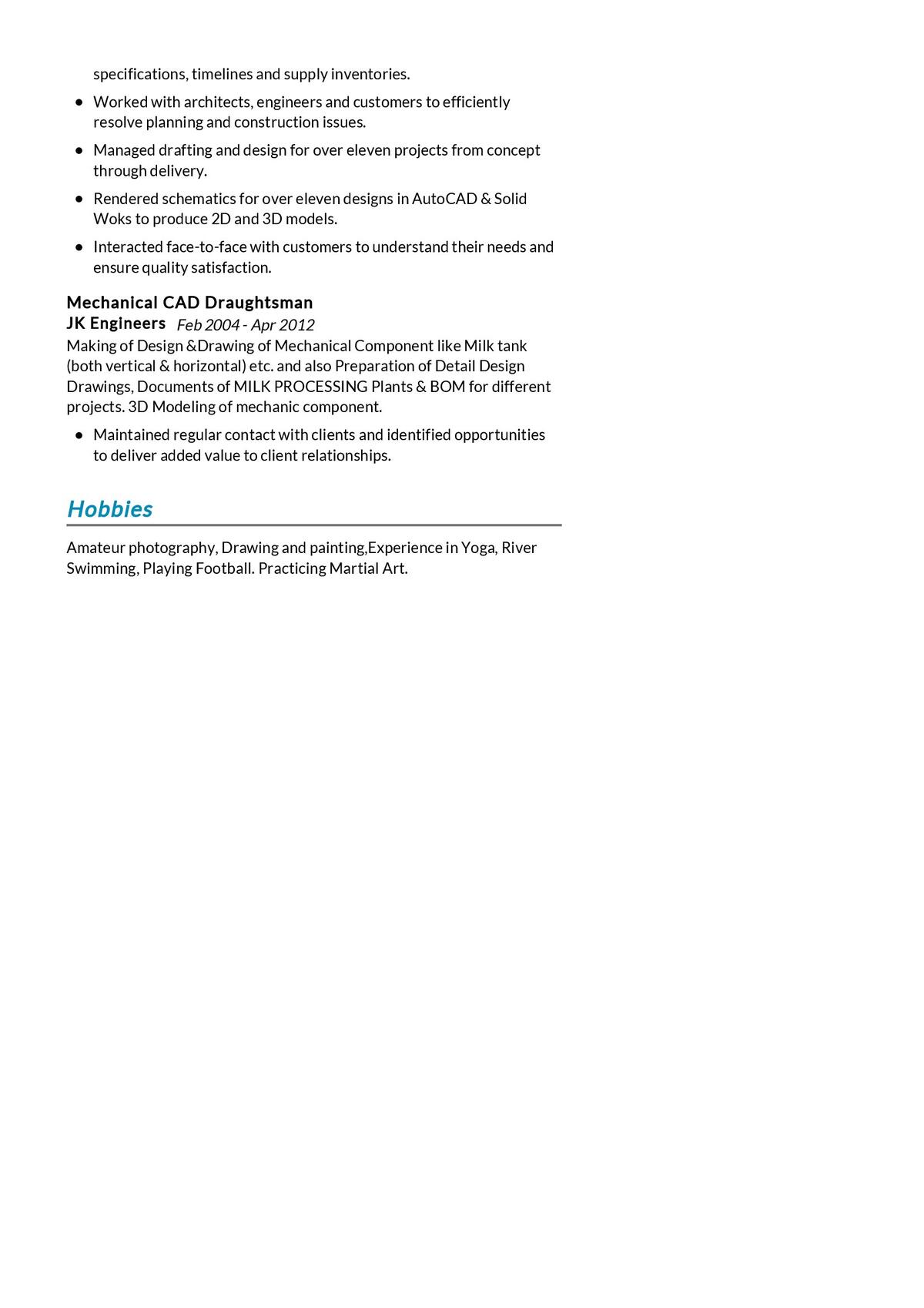What Should Be Included In A Design Engineer Resume?
When writing a design engineer resume, it is important to include all of your qualifications and experience that are applicable to the job. A design engineer works with a variety of materials, equipment and software tools to create components or products that meet customer specifications. It is essential that your resume reflects your ability to work with a wide range of materials, tools and processes. As such, it is important to include any experience or certifications that demonstrate your technical expertise.
Your work history should be listed in a chronological format, with the most recent job listed first. When crafting each job description, make sure to provide a clear description of your responsibilities and achievements. For each job, you should also include the number of years you worked in the position and the company. Additionally, be sure to list any awards, achievements or special projects that you have completed.
You should also include any relevant certifications or credentials related to your design engineering experience. Include any relevant software or computer programming certifications. If you have specialized experience in a particular field, such as aerospace engineering, include a section outlining your experience and expertise in that field.
Finally, include any additional skills that would be advantageous to the role. These could include problem solving skills, team collaboration abilities, creative thinking or communication skills. By providing this information in your resume, you will show the hiring manager that you have the necessary skills to fulfill the job requirements.
What Skills Should I Put On My Resume For Design Engineer?
A Design Engineer plays a critical role in the production of products. Their job is to combine creativity, technical knowledge, and engineering principles to create cost effective and high-quality products. In order for employers to take notice of your job application, it is important for your Design Engineering resume to reflect your experience, skills, and qualifications.
When writing a Design Engineering resume, you should ensure that your skills and abilities are highlighted. A well-crafted resume will showcase your aptitude for problem solving, your creative approach to product design, as well as your ability to work within a team environment. It is also important to include quantitative data that demonstrates your technical proficiency, such as the number of projects you have completed or the number of design solutions you have implemented.
The most important skills to include on your Design Engineering resume are those related to computer-aided design (CAD) software, product design, engineering principles, and problem-solving. If you have experience in any type of software related to design engineering, such as Autodesk products, then be sure to include this as well. In addition, employers will want to see a record of successful product designs and any other related qualifications that you possess.
When writing your Design Engineering resume, it is important to be concise and to the point. Keep your resume free of any fluff or unnecessary words. Highlight the skills that demonstrate your proficiency in design engineering and showcase any accomplishments or awards you have received. This will ensure that your resume is noticed and will help you stand out from the competition.
What Is The Job Description Of The Design Engineer?
A Design Engineer’s job is to develop, design, and test systems and components for a variety of industries. In this role, the engineer is responsible for researching and designing components and systems that are cost-effective, meet the required specifications, and are efficient. This can include manufacturing processes, materials, parts, products, and equipment. Design engineers must also have a thorough understanding of the product’s requirements and specifications, be able to interpret customer requirements, and evaluate potential solutions.
Design engineers must also possess excellent communication skills, as they often interact with customers, suppliers, and other professionals. Design engineers must also be able to interpret complex data, develop innovative solutions, and use the latest software and computer-aided design (CAD) technologies to create and simulate designs. They must be able to work with other professionals when designing a product and must be comfortable working in a team environment.
Design engineers must also be able to assess risk and ensure that the design meets all safety, environmental, and regulatory guidelines. They must also be able to create and optimize new designs, troubleshoot existing designs, and test prototypes. Additionally, they should be familiar with relevant manufacturing processes and materials.
Ultimately, design engineers are responsible for creating a product that meets the customer’s requirements, works efficiently, and is cost-effective. They must also be able to stay on top of new technologies and adapt their skills as needed to provide the best solutions and designs possible.
What Is A Good Objective For A Design Engineer Resume?
When it comes to writing a design engineer resume, it is important to include a strong objective that outlines what you expect to achieve as a design engineer. An effective objective should demonstrate your knowledge of the engineering field, your experience and qualifications, as well as your commitment to the job. This will show potential employers that you are a well-rounded candidate who is organized and passionate about design engineering.
A good objective for a design engineer resume should demonstrate your experience and qualifications, while clearly expressing your career goals. It should be specific and concise, yet accurately convey your abilities and passion for the job. For example, an ideal objective may read: “To deliver innovative design solutions for a global clientele and increase efficiency in the engineering field.”
You should also include any relevant certifications, licenses, or training that you have obtained. This will demonstrate to employers that you are knowledgeable and have the necessary skills to excel in the job. Additionally, be sure to include any awards, publications, or research that you have conducted in the engineering field. This will show employers that you are proactive and dedicated to the profession.
Finally, you should focus on demonstrating your technical skills and expertise. Include a detailed list of the software programs you are familiar with and any other relevant software engineering experience that you have obtained. This will help employers gauge your abilities and further understand what you can bring to the role.
Overall, it is important to craft a unique and detailed design engineer resume objective that accurately reflects your experience, qualifications, and career goals. This will help employers determine whether or not you are the right fit for the position.
What Are The Career Prospects In The Design Engineer?
Design engineering is a rapidly growing field with a wide range of opportunities. This profession is considered one of the most diverse and rewarding engineering careers, offering a variety of roles that span the entire product development process. Design engineers are responsible for the development, testing, and implementation of innovative products and processes. They work with a team of professionals to ensure that the design of a product or process meets the needs of the customer or user.
Design engineers are also responsible for managing the costs of the product, measuring performance, and optimizing the design to meet the customer’s needs. They must understand the latest technology and materials available, as well as the manufacturing processes and industry regulations. A design engineer must have a creative eye, practical problem-solving skills, and the ability to think outside of the box.
The job outlook for design engineers is very positive. With the need for innovative products and processes increasing, employers are seeking out talented designers with technical and creative skills. The demand for design engineers is expected to grow in the coming years due to the rise in the number of technological advancements. Design engineers can find positions in many industries such as automotive, aerospace, military, and medical industries.
Design engineers are in high demand and are well-compensated. Salaries vary depending on the industry and the experience level of the engineer. Experienced engineers can expect to make considerably more than entry-level engineers. It’s important to research the industry before applying for a design engineer role, as salaries can vary greatly.
Design engineers are essential to the development of new and innovative products and processes. With the increasing need for engineers, this field is a great opportunity for those looking for a stimulating and rewarding career . The increasing demand for design engineers, combined with the rise of technological advancements, is expected to result in an increase in job opportunities in the future. Additionally, the ability to work in a variety of industries provides design engineers with a wide range of career options.
Key Takeaways for an Design Engineer resume
An effective Design Engineer resume should be well organized, with clear headings and subsections that showcase your skills and experience in a logical manner. It should also be tailored to the specific job you’re applying for, with relevant keywords and key phrases that demonstrate your expertise.
When writing your Design Engineer resume, be sure to include important information like your past experience, technical skills and qualifications, and any awards or achievements you have received. You should also include details about any certifications or licenses you hold, as well as your educational background. To make your resume stand out, include any specializations or areas of expertise that are relevant to the job you are applying for.
When working on the design aspects of your resume, make sure to utilize effective formatting, spacing, and font choices. Your resume should be easy to read, with ample white space and a professional design. Additionally, any visuals or graphics you use should be relevant to the job and help enhance the overall design.
Finally, remember to proofread your resume carefully to ensure there are no spelling or grammar errors. Pay attention to the details so that you can make the strongest possible impression. With a well-crafted Design Engineer resume in hand, you’ll have a better chance of getting the job you want.



